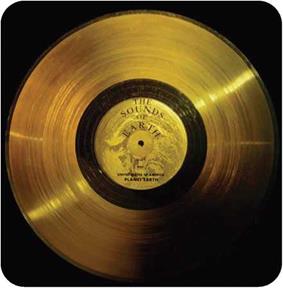The Voyager Probes and Galileo
Much of what scientists now know about the four “gas giant” planets-
Jupiter, Saturn, Uranus, and Neptune – came from NASA’s two Voyager probes, launched in 1977. Voyager 1 flew past Jupiter and Saturn before leaving the
DISTANT VOYAGERS
Voyager 1 and Voyager 2 each carry a gold disk showing the location of Earth within the Milky Way galaxy. The golden record also contain sounds and images chosen to portray the diversity of life on Earth. It is meant to communicate with any intelligent life-form that might collect one of the Voyagers. The Voyager spacecraft will take about 40,000 years to approach another star, however, and the probes are minute compared to the vastness of interstellar space. The chances of any alien life-form finding one of the probes is therefore remote.
|
|
__________________________________________________ /
solar system. Voyager 2 journeyed on to visit Uranus in 1986 and Neptune in 1989. Jupiter has some of the wildest weather in the solar system, with winds up to 300 miles per hour (480 kilometers per hour). Jupiter also spins faster than any other planet. As a result, its day is less than 10 hours long.
In 1995 the Galileo probe orbited Jupiter and sent a small, cone-shaped lander plunging down into the atmosphere through clouds of ammonia ice crystals. The probe survived for an hour, sampling the hostile atmosphere, until it was destroyed.











